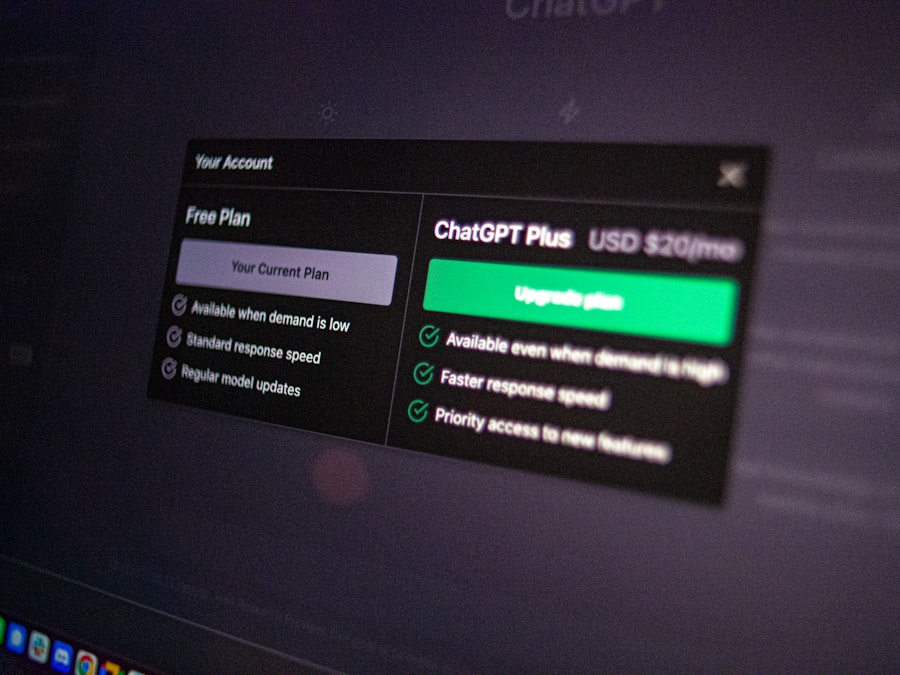In recent years, the landscape of communication has been transformed by the advent of real-time language translation apps. These innovative tools have emerged as essential companions for travelers, business professionals, and anyone seeking to connect across linguistic divides. With the ability to translate spoken or written language instantaneously, these applications have made it possible for individuals to engage in conversations without the hindrance of language barriers.
The rise of smartphones and the proliferation of high-speed internet have further fueled the popularity of these apps, making them accessible to a global audience. The technology behind real-time translation apps has evolved significantly, leveraging advancements in artificial intelligence and natural language processing. Companies like Google, Microsoft, and various startups have invested heavily in developing algorithms that can understand context, idiomatic expressions, and even regional dialects.
This has led to a more nuanced understanding of language, allowing users to communicate more effectively. As a result, these apps are not just tools for translation; they are gateways to cultural exchange and understanding, fostering connections that were once difficult to achieve.
Key Takeaways
- Real-time language translation apps have seen a significant rise in popularity due to their convenience and accessibility.
- Automatic video subtitles have revolutionized global communication by making content more accessible to non-native speakers.
- Multilingual chatbots are playing a crucial role in bridging the language gap in customer service, providing efficient and personalized support to users in their preferred language.
- Machine learning and AI have greatly impacted translation technology, leading to more accurate and natural-sounding translations.
- The evolution of speech recognition in translation apps has improved the overall user experience and made communication across languages more seamless.
Automatic Video Subtitles: A Game Changer for Global Communication
Breaking Down Language Barriers
This technology not only enhances accessibility for the hearing impaired but also enables viewers from diverse linguistic backgrounds to enjoy the same content simultaneously. The implications of automatic video subtitles extend beyond mere convenience; they represent a significant shift in how information is disseminated.
Democratizing Information and Fostering Inclusivity
Educational institutions, businesses, and content creators can now reach wider audiences without the need for extensive localization efforts. This democratization of information fosters inclusivity and encourages diverse perspectives, as people from various cultures can engage with content that was previously out of reach due to language barriers.
A Brighter Future for Global Communication
As this technology continues to improve, we can expect even greater accuracy and contextual understanding, further enhancing global communication.
Multilingual Chatbots: Bridging the Language Gap in Customer Service

Multilingual chatbots have emerged as a powerful solution for businesses looking to enhance their customer service capabilities. These AI-driven tools can interact with customers in multiple languages, providing instant support and information regardless of the user’s linguistic background. By integrating natural language processing and machine learning, these chatbots can understand and respond to inquiries in real-time, creating a seamless experience for users around the world.
The benefits of multilingual chatbots extend beyond mere convenience; they also contribute to improved customer satisfaction and loyalty. Businesses that adopt these technologies can cater to a diverse clientele, ensuring that language is no longer a barrier to effective communication. Furthermore, as these chatbots learn from interactions, they become increasingly adept at understanding customer preferences and nuances in language use.
This continuous improvement not only enhances the user experience but also allows companies to gather valuable insights into their customer base, ultimately driving better business decisions.
The Impact of Machine Learning and AI on Translation Technology
Machine learning and artificial intelligence have fundamentally reshaped translation technology, enabling unprecedented levels of accuracy and efficiency. Traditional translation methods often relied on human translators who could take days or even weeks to complete a project. In contrast, AI-powered translation tools can process vast amounts of text in mere seconds, making them invaluable for businesses operating in fast-paced environments.
This speed does not come at the expense of quality; modern algorithms are designed to learn from vast datasets, improving their performance over time. Moreover, machine learning allows translation technology to adapt to specific industries or contexts. For instance, legal documents may require a different approach than marketing materials due to their unique terminologies and nuances.
AI systems can be trained on specialized datasets, ensuring that translations are not only accurate but also contextually appropriate.
The Evolution of Speech Recognition in Translation Apps
The evolution of speech recognition technology has played a pivotal role in enhancing the functionality of translation apps. Initially, speech recognition systems struggled with accents, background noise, and varied speech patterns, often leading to frustrating user experiences. However, recent advancements have significantly improved the accuracy and reliability of these systems.
By employing deep learning techniques and vast amounts of training data, modern speech recognition algorithms can now understand a wide range of voices and dialects with remarkable precision. This evolution has opened up new possibilities for real-time translation applications. Users can now speak naturally into their devices without worrying about misinterpretation or errors.
The integration of speech recognition with translation technology allows for fluid conversations between speakers of different languages, making it easier than ever to connect with others across cultural divides. As this technology continues to advance, we can anticipate even more seamless interactions that will further bridge the gap between languages.
The Role of Translation Technology in Breaking Down Language Barriers

Breaking Down Language Barriers
Translation technology plays a crucial role in breaking down language barriers that have historically hindered communication between cultures. Whether it’s through real-time translation apps or automatic subtitles for videos, the ability to communicate effectively with individuals from different backgrounds is more attainable than ever before.
Empowering Global Storytelling
Furthermore, translation technology empowers individuals and organizations to share their stories and ideas with a broader audience. Content creators can now reach international markets without the need for extensive localization efforts, while businesses can expand their customer base by offering support in multiple languages.
The Future of Multilingual Content Creation and Localization
As technology continues to advance, the future of multilingual content creation and localization looks promising. With AI-driven tools becoming more sophisticated, content creators will have access to resources that streamline the localization process while maintaining cultural relevance. Automated translation systems will likely become more adept at understanding context and tone, allowing for translations that resonate with local audiences.
Moreover, as businesses increasingly recognize the importance of catering to diverse markets, we can expect a surge in demand for multilingual content. This will drive innovation in localization strategies, leading to more personalized experiences for users around the globe. The integration of AI with human expertise will create a hybrid approach that combines efficiency with cultural sensitivity, ensuring that content is not only translated but also adapted to meet the unique needs of different audiences.
The Challenges and Opportunities of Real-Time Language Translation Apps
While real-time language translation apps offer numerous benefits, they are not without their challenges. One significant hurdle is ensuring accuracy in translations, particularly when dealing with idiomatic expressions or culturally specific references. Despite advancements in AI and machine learning, there are still instances where translations may miss the mark or fail to capture the intended meaning fully.
This highlights the importance of continuous improvement in translation algorithms and the need for human oversight in certain contexts. On the other hand, the opportunities presented by real-time translation apps are vast. As these technologies continue to evolve, we can expect improvements in accuracy and contextual understanding that will further enhance user experiences.
Additionally, as more people adopt these tools for personal and professional use, we may witness a shift towards greater acceptance of multilingualism in everyday life. This could lead to increased collaboration across cultures and industries, ultimately fostering a more interconnected global community where language is no longer a barrier but rather a bridge to understanding one another better.
In a related article on the Metaversum website, the concept of the metaverse is explored in depth. The article titled If We Asked Sigmund Freud About the Metaverse, What Would He Say? delves into the potential psychological implications of virtual reality and how it may impact our understanding of the self. As we consider the future of translation and communication in a digital world, it is important to also examine the broader implications of emerging technologies like the metaverse.
FAQs
What is real-time language translation?
Real-time language translation refers to the ability to translate spoken or written language instantly, as it is being spoken or typed, without any delay.
What are language translation apps?
Language translation apps are mobile applications that allow users to translate text or speech from one language to another. These apps often use machine learning and artificial intelligence to improve translation accuracy.
What are automatic video subtitles?
Automatic video subtitles are subtitles that are generated in real-time as a video is being played. These subtitles are automatically translated into different languages to make the video content accessible to a wider audience.
What are multilingual chatbots?
Multilingual chatbots are AI-powered virtual assistants that can communicate with users in multiple languages. These chatbots are designed to understand and respond to queries in different languages, making them useful for global businesses and multilingual customer support.
How do real-time language translation apps work?
Real-time language translation apps use machine learning algorithms to analyze and translate spoken or written language. These apps often rely on large datasets of language pairs and continuous learning to improve translation accuracy.
What are the potential benefits of real-time language translation technology?
The potential benefits of real-time language translation technology include breaking down language barriers, facilitating global communication, enabling access to information and services in different languages, and improving cross-cultural understanding and collaboration.
What are the limitations of current real-time language translation technology?
Current real-time language translation technology may still struggle with accurately translating complex or nuanced language, idiomatic expressions, and cultural context. Additionally, some languages may have fewer resources and data available for accurate translation.











Leave a Reply